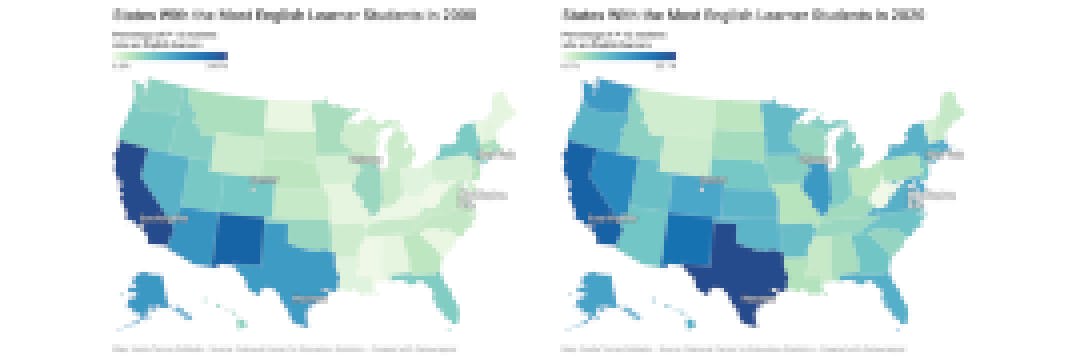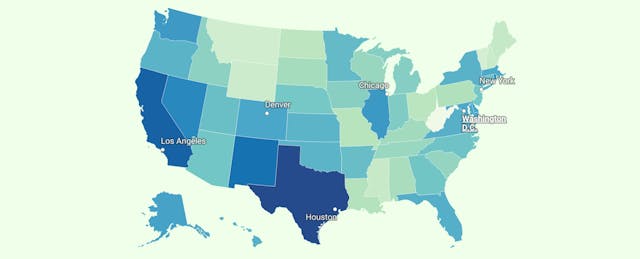We wrote recently about some of the reasons that may be keeping teachers from pursuing the bilingual educator route, despite the widespread need for teachers who can instruct English learners.
The need has gained new urgency as the immigrant population in the U.S. grows. Politicized clashes over the nation’s immigration policy have seen the governor of Texas busing migrants newly arrived across the Mexican border to cities like New York, Chicago and Denver. All districts in all three metro areas report a shortage of bilingual teachers.
But that shortage is nothing new, according to data from the National Center for Education Statistics, which shows that more than one-fifth of school districts had trouble filling at least one bilingual education or English as a second language role back in 2011-12. That figure grew to nearly one-third of districts during the 2020-21 school year.
We dug further into data from the National Center for Education Statistics to find out how the rate of English learners enrolled in public schools has changed over time.

Back in 2000, the concentration of English learners was strongest in the Southwest and other Western states, where nearly one-in-four California students was classified as an English learner.
By 2020, the English learner populations had shifted away from just border states and major cities. Delaware had the largest increase of any state in its proportion of English learners, growing from 1.8 percent to 10.7 percent over the 20-year period. English learners are the fastest-growing student demographic in the state, according to a Delaware education nonprofit, making up one-fifth or more of students in some counties. Put into numbers, Delaware saw an increase from about 2,000 English learners to nearly 14,600.
Tiny Rhode Island cracked the top 10 list with its proportion of English learners that year at 12.2 percent — or nearly 16,700 students — making it the state’s fastest-growing student group. In the capital of Providence, one-third of students are English learners who speak one of 54 different languages at home.
The Midwest and Pacific Northwest have more English learners than they did 20 years ago, too. While perhaps growing at more modest rates, all but nine U.S. states experienced an increase in English learner students over that time period.
The three states that lost the highest percentage of English learners were California, Arizona and New Mexico — though the number of English learners they serve is by no means small. California, for instance, had more than 1 million enrolled schools in 2020. That figure had been more than 1.4 million in the Golden State back in 2000.
Texas was the only border state to buck the trend of losing English learners, growing its English learner population to one-fifth of public school students in 2020 — or 1 million English learners, compared to roughly 570,000 two decades before.


